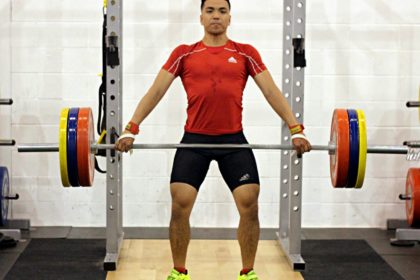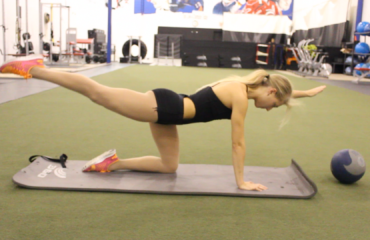Why I Love the Snatch Deadlift

Is there an exercise better than a deadlift? Yes, there is! For a greater range of motion, perform a snatch deadlift instead. A snatch deadlift is when you hold the bar with a wider grip (also known as the snatch grip) when deadlifting. As a casual weightlifter, I love to use movements that can carry over to the Olympic lifts to increase performance and this exercise is one of them.
Benefits of the Snatch Deadlift
Development of the posterior chain
The snatch deadlift gives you a greater range of motion and gives the glutes and hamstrings a greater stretch therefore yielding greater gains for the posterior chain in comparison to a regular deadlift.
The snatch deadlift gives you a greater range of motion and gives the glutes and hamstrings a greater stretch therefore yielding greater gains for the posterior chain in comparison to a regular deadlift.
Greater gains for the upper-back
The increased recruitment of the upper-back and posterior deltoids due to the change in positioning of your torso allows for greater development of the upper-back.
The increased recruitment of the upper-back and posterior deltoids due to the change in positioning of your torso allows for greater development of the upper-back.
Increased hip flexibility
The wide grip forces you to get into a lower position by squatting lower in comparison to a regular deadlift.
The wide grip forces you to get into a lower position by squatting lower in comparison to a regular deadlift.
Increased grip strength
A strong grip is crucial for strength development and long term health. By using a wider grip, you get more activation from your forearm muscles.
A strong grip is crucial for strength development and long term health. By using a wider grip, you get more activation from your forearm muscles.
How to Find Your Snatch Grip
I know you’re getting excited and itching to pick up a bar using the snatch grip. Before you start, you must figure out how wide your grip should be!
There are several ways to determine your snatch grip length. The first is to get a partner to measure the distance of both the elbow bone (olecranon) from an abducted shoulder position – so it looks like you’re showing your wingspan.
If you don’t have a partner, don’t worry! There is another method that is easier. All you need to do is to stand up with the bar and adjust the width of your grip until the bar is in line (or at the same height) with your hip joint.
The snatch grip may feel uncomfortable at first but, with good technique and practice, you should be able to use this deadlift variation in no time. Once you have established good scapula stability and hip mobility, the snatch deadlift is a great variation to add to your training.
How to Snatch Deadlift
1. Feet Position
Place your feet under the bar and cover the mid-foot. Your feet should be shoulder-width apart or just a little bit wider with the toes pointed slightly outwards. Squat down until your shin touches the bar.
Place your feet under the bar and cover the mid-foot. Your feet should be shoulder-width apart or just a little bit wider with the toes pointed slightly outwards. Squat down until your shin touches the bar.
2. Grip Position
Using one of the methods mentioned above, you should be able to figure out how wide your grip should be. Grab the bar with a snatch grip, lift the chest up and settle into a neutral spine position. You are now ready to pull.
3. Finish Position
Pull the bar off the ground by driving the legs and squatting up. Once the bar passes the knees, bring the hips forwards into a lockout by contracting your glutes and keep the bar close to you (for the sake of your back!). Retract the scapula at the top to maintain a straight back.
* * *
The snatch deadlift is another “best bang for your buck” type exercise that is worth the investment. Aside from many strength benefits, it’s a great tool to use to build massive traps, winged-carrier lats, and beastly quads.
#GritTip! If you want to learn more about the science behind the deadlift, here are some readings I’d definitely recommend:
- Exploring the Deadlift by Stephen Bird and Benjamin Barrington-Higgs
- Explosive Lifting for Sports by Harvey Newton



